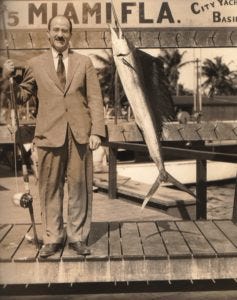Race and Gender in the Selection of Patients for Lobotomy
I researched my book The Lobotomist, a biography of lobotomy developer and advocate Walter Freeman, M.D., more than twelve years ago. I still remember the dismay I felt when I turned up evidence that Freeman and his fellow psychosurgeons considered race and gender when they decided whose brains they would cut and disrupt in their quest to treat psychiatric illnesses.

Freeman’s racial attitudes were complicated. As president of the Medical Society of the District of Columbia during the late 1940s, he worked hard to change the organization’s by-laws to allow it to admit African American physicians as members. Yet Freeman held peculiar beliefs about the psychological make-up and social influences of people of color, and these affected his treatment of patients.
He believed, for instance, that African American psychiatric patients, especially women, were among the best candidates for lobotomy because of what he called “the greater family solidarity manifested by these people.” Freeman meant that in his opinion black families were more likely to give their relatives who survived lobotomy devoted post-operative care. In addition, he was impressed by the results lobotomy produced among black patients. At the West Virginia state hospital in Lakin, Freeman operated on many African American patients in 1952 and was happy when he returned “a week or so after operating upon twenty very dangerous Negroes and found fifteen of then sitting under the trees with only one guard in sight,” he wrote.
Freeman in 1951 volunteered to experimentally use his transorbital lobotomy technique on black patients at the Veterans Administration hospital in Tuskegee, Alabama. When a neurosurgeon on staff protested, though, the Veterans Administration banned the use of this procedure at this hospital, and in the words of Freeman’s fellow lobotomist William Sargant, the “whole Negro-rescue plan had to be cancelled.”
At the same time, women disproportionately became targets for lobotomization. Of Freeman’s first twenty psychosurgery patients, seventeen were women. From the 1940s through the mid-1950s, men slightly outnumbered women as patients in state hospitals, yet female patients made up about 60 percent of those who underwent lobotomy. A preponderance of women suffering from depression and other affective disorders may be partly responsible, but agitated and boisterous behavior in women was less acceptable to doctors of Freeman’s time than the same behavior in men. Many psychiatrists believed it was easier to return women after operation to a life of domestic duties at home than it was to post-operatively rehabilitate men for a career as a wage earner.
On people of all races and genders, Freeman and his fellow practitioners of lobotomy began performing fewer of the operations after the introduction of psychoactive medications in the U.S. in 1954. When Freeman died in 1972 — remaining a believer in lobotomy to the very end — only a small number of the operations were still being given anywhere.
Further reading:
El-Hai, Jack. The Lobotomist: A Maverick Medical Genius and His Tragic Quest to Rid the World of Mental Illness. (Wiley, 2005)
Phillips, Michael M. “The Lobotomy Files: One Doctor’s Legacy.” A Wall Street Journal Special Project.








